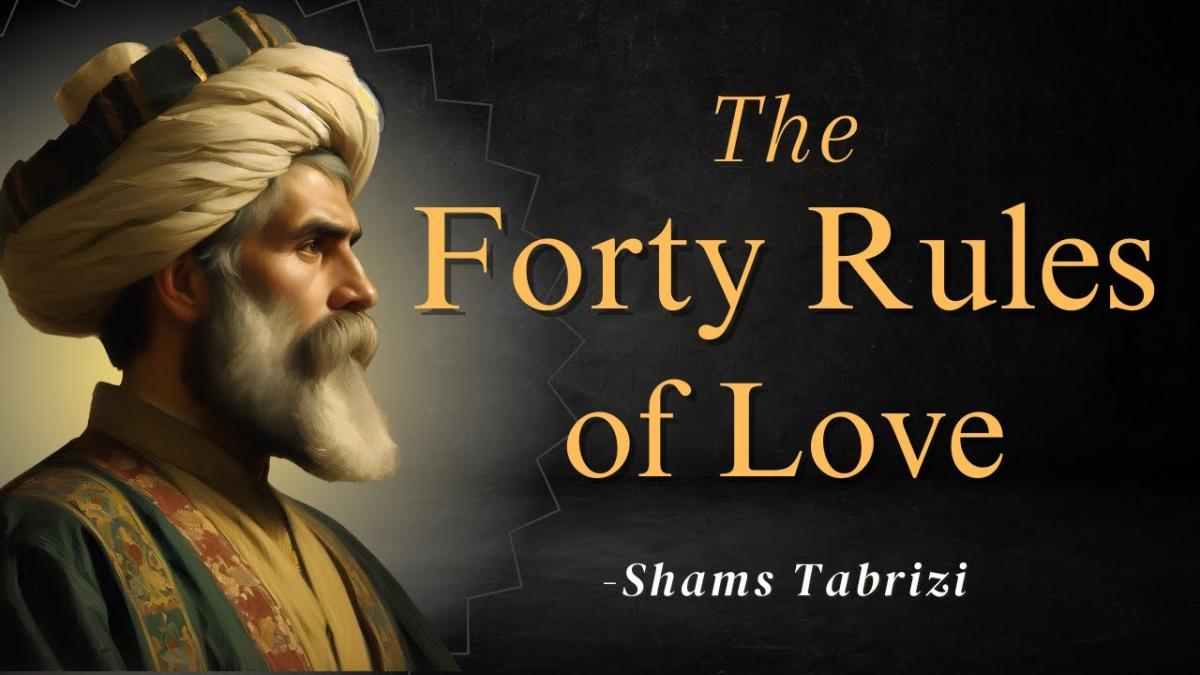The Forty Rules of Love is a novel by Elif Shafak, published in 2009. It is a spiritual and philosophical novel that interweaves two narratives: one of a contemporary woman living in the United States, and the other of the mystical relationship between the Sufi poet Rumi and the wandering dervish Shams of Tabriz in the 13th century.
The book explores Sufism, divine love, inner transformation, and the idea that love is a path to God.
Contemporary Setting: Ella Rubinstein
· Ella Rubinstein, a 40-year-old American housewife, lives a dull life with a distant husband and three children. She feels an emotional and spiritual void.
· She works as a reader for a publishing house and is assigned a manuscript by an author named A.Z. Zahara: Sweet Blasphemy, which tells the story of Rumi and Shams of Tabriz.
· This book triggers a profound transformation in her. She begins emailing the author and eventually falls in love with him. Their exchange leads her to question her faith, her marriage, and her worldview.
Historical Setting: Rumi and Shams of Tabriz (13th Century)
· Shams, a wandering dervish seeking a spiritual companion, is guided by a vision to Konya (in present-day Turkey), where he meets Rumi, a renowned religious scholar who is still spiritually “asleep.”
· Their intense friendship and spiritual bond shock the community. Shams teaches Rumi to let go of religious formalism and embrace divine love and inner truth.
· This relationship sparks jealousy, rumors, and opposition. Shams is marginalized and eventually assassinated (likely at the behest of Rumi’s son, Aladdin).
· After Shams’s death, Rumi transforms into a mystical poet, expressing divine love through poetry (ghazals and the Mathnawi).
The Forty Rules of Love
· Scattered throughout the novel, these rules are expressed by Shams. They represent Sufi principles about love, God, faith, ego, tolerance, and the inner journey.
· Examples:
o Rule 1: “How you see God is a direct reflection of how you see yourself.”
o Rule 18: “Everyone thinks they are right in their faith, but love dissolves all rigid beliefs.”
· These rules serve as a spiritual initiation for both Ella and the reader, offering wisdom and challenging rigid religious norms.
Divine Love vs. Human Love
· The love between Shams and Rumi is a love of the soul, beyond the physical. It is viewed as mystical love that leads to God.
· For Ella, the love she discovers for Aziz Zahara is human, yet it also becomes a path to spiritual liberation.
The Conflict Between Institutional Religion and Spirituality
· The ulema (religious scholars) oppose Shams because he represents a free, living faith rather than institutional dogma.
· Shams challenges religious hypocrisy and prioritizes direct experience of God over formalism.
Inner Transformation
· Both narratives follow a journey of inner metamorphosis: Rumi becomes a mystic; Ella becomes a free woman.
· The message: transformation is possible at any age, through love, pain, and the search for meaning.
The Forty Rules of Love is a spiritual coming-of-age novel that invites readers to rethink their relationship with love, God, and themselves. Through the figure of Shams of Tabriz, Elif Shafak conveys a message of tolerance, humanity, and deep spirituality.
Please post your comments on:
[email protected]
 Politics
Politics













